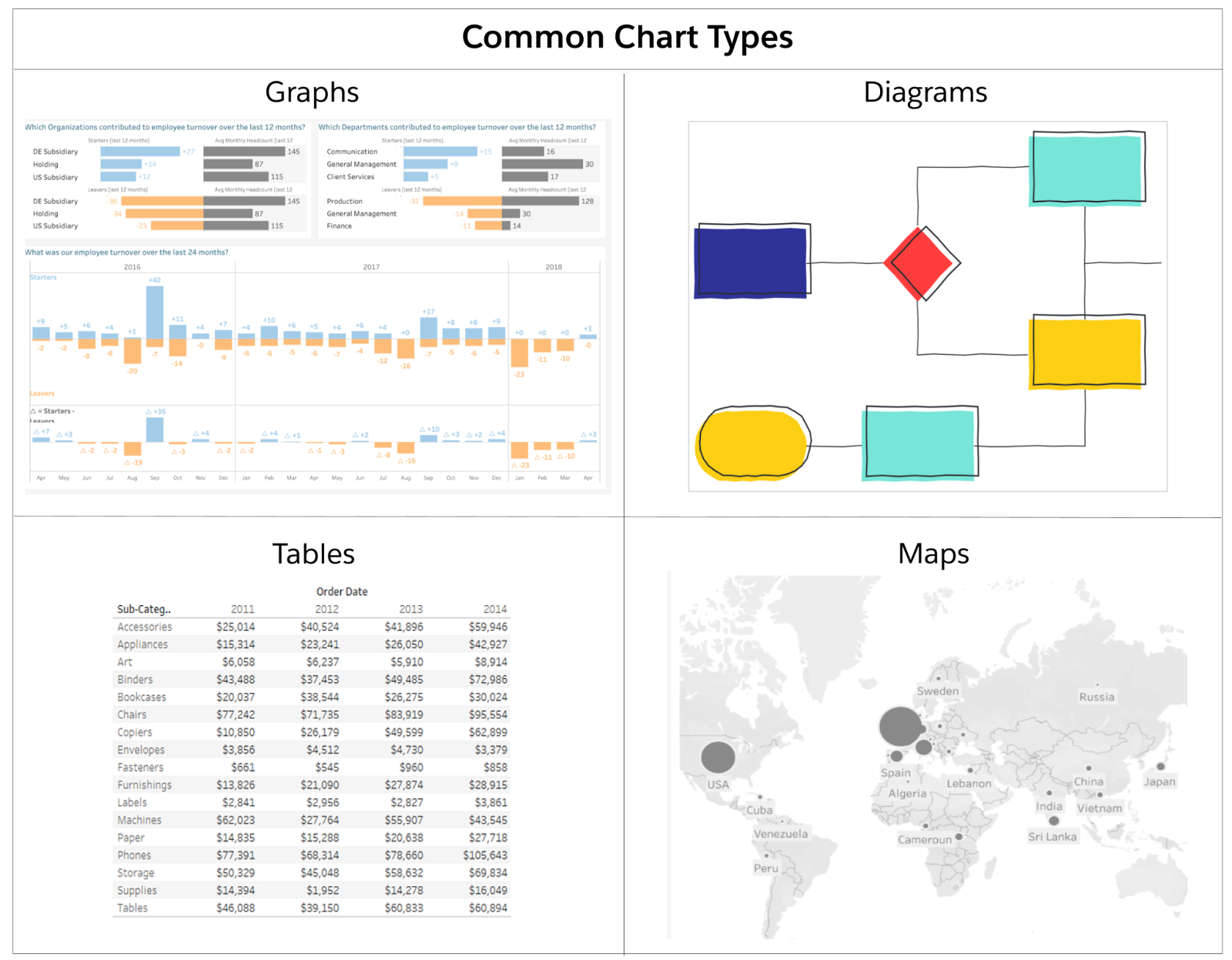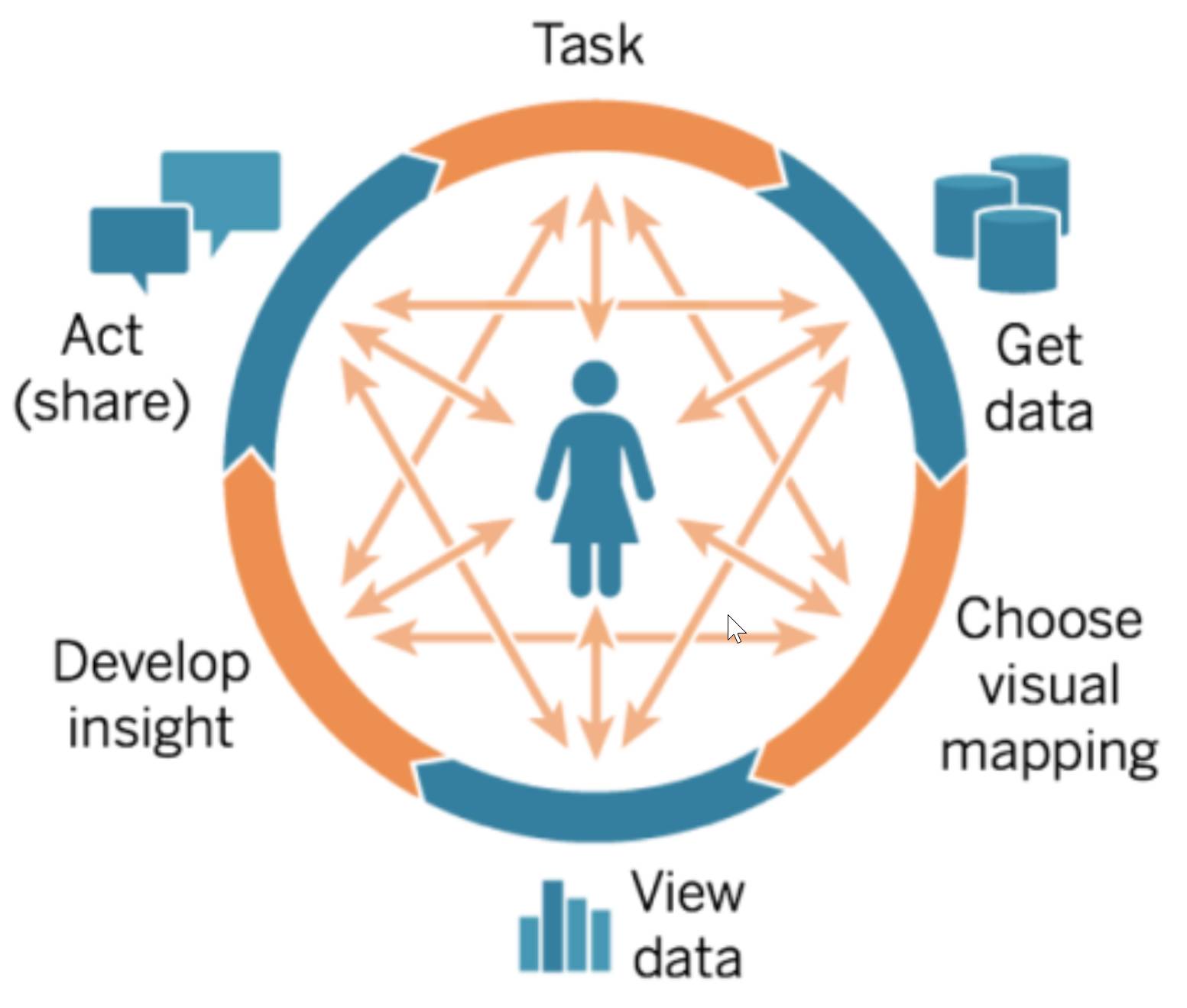Darum brauchen wir Diagramme
Lernziele
Nachdem Sie diese Lektion abgeschlossen haben, sind Sie in der Lage, die folgenden Aufgaben auszuführen:
- Beschreiben, wie wichtig die Verwendung von Diagrammen ist
- Erklären, wie Diagramme helfen, Fragen zu stellen und zu beantworten
- Erläutern, wie wichtig eine gute Datenqualität bei der Verwendung von Daten in Diagrammen ist
Warum verwenden wir Diagramme? Machen wir einen kurzen Ausflug in die Geschichte
Menschen erstellen schon seit langer Zeit Diagramme zur Visualisierung von Daten. Schon vor Tausenden von Jahren wurden Stadt- und Ortspläne erstellt, wie z. B. die Karte der Stadt Nippur um 1400 v. Chr. Andere Manuskripte, wie die von Ptolemäus im zweiten Jahrhundert, nutzten visuelle Darstellungen zur Beschreibung astronomischer Grundsätze.
Auch heute verwenden wir Diagramme zur Darstellung von Daten und haben unsere Fähigkeit, Daten auszuwerten und zu interpretieren, ständig weiterentwickelt.
Denken Sie an das Armaturenbrett im Auto. Während der Fahrt sehen Sie Ihre Geschwindigkeit sowie den Füllstand des Benzintanks und können sich darauf verlassen, dass Warnhinweise angezeigt werden, wenn Sie sich um eines der Systeme kümmern müssen. Die Designer des Armaturenbretts im Auto machen sich ausgiebig Gedanken über die richtige Platzierung von Werten, Hinweisen und Skalen auf dem Armaturenbrett, damit Ihnen die wichtigsten Informationen in dem Moment angezeigt werden, in dem Sie sie brauchen.
Auf ähnliche Weise helfen Ihnen Datenvisualisierungen, Vergleiche anzustellen, Trends zu erkennen, Situationen und Fortschritte zu überwachen und Schlussfolgerungen zu ziehen, die Ihnen helfen, Probleme zu lösen und bessere Entscheidungen zu treffen.
Arten von Diagrammen
Der Duden definiert Diagramme als "grafische Darstellung von Größenverhältnissen bzw. Zahlenwerten in anschaulicher, leicht überblickbarer Form". Diagramme helfen Ihnen, Beziehungen oder Muster in Daten schneller zu erkennen als dies bei einer Prüfung der Rohdatenpunkte möglich wäre. Und genauso wie es viele Arten von Daten gibt, gibt es auch viele Arten von Diagrammen für die Visualisierung dieser Daten, wie etwa Grafiken, Tabellen, Diagramme, Karten usw.

Diagramme helfen, Fragen zu stellen und zu beantworten
Stellen guter Fragen
Im Modul Datenkompetenz – Grundlagen wird erläutert, wie wichtig es ist, die richtigen Fragen zu stellen. Beim Untersuchen von Daten bestimmen die Fragen, die Sie stellen, die Richtung unserer Analysen und die Schlussfolgerungen, die Sie aus diesen Analysen ziehen. Wenn Sie Ihre Daten nutzen wollen, um bessere Entscheidungen zu treffen, müssen Sie die bestmöglichen Fragen stellen, um die bestmöglichen Antworten zu erhalten.
Im Blog Gewinnen Sie neue Erkenntnisse aus Ihren Daten: Fragen Sie immer wieder nach dem "Warum" beschreibt Andy Cotgreave, Senior Technical Evangelist für Tableau bei Salesforce, wie die Interaktion mit Diagrammen und das ständige Stellen neuer Fragen an Ihre Daten dazu führen kann, die Kernursache eines Problems zu entdecken, damit die bestmöglichen Maßnahmen ergriffen werden können.

Der Kreislauf der visuellen Analyse
Die Verwendung von Diagrammen, um kontinuierlich Fragen zu stellen, kann als Teil des Kreislaufs der visuellen Analyse betrachtet werden, der eine Schlüsselkomponente der bewährten Vorgehensweisen bei der Analyse darstellt.
Am Anfang des Kreislaufs steht eine bestimmte Aufgabe oder unternehmerische Frage. Darauf folgen das Abrufen von Daten, die Visualisierung von Daten zur Gewinnung von Erkenntnissen, die Weitergabe und Auswertung dieser Erkenntnisse und das Stellen neuer Fragen im weiteren Verlauf des Kreislaufs. An jedem Punkt des Zyklus kann festgestellt werden, dass eine andere Frage beantwortet werden muss. Das Stellen guter Fragen steuert den Analysezyklus und führt zu besseren Erkenntnissen.
Warum ist das wichtig? Weil Unternehmen, die bewährte Vorgehensweisen für die Analyse einsetzen, ihre Daten dann besser nutzen können, um die größtmöglichen geschäftlichen Auswirkungen zu erzielen.

Vergleiche zur Untersuchung von Daten
Wenn Sie Diagramme verwenden, um Fragen zu stellen und zu beantworten, stellen Sie Vergleiche an. Sie können Fragen stellen wie: Wie stark verändert sich der Gewinn im Laufe der Zeit? Ist ein Produkt profitabler als ein anderes? Welche Marketingkampagne bringt bessere Ergebnisse? Diese Fragen führen dazu, dass Sie Vergleiche mit Ihren Daten anstellen.
Wie nehmen Sie diese Vergleiche am besten vor? Mit Hilfe von Diagrammen, natürlich! Aber welche Diagramme verwenden Sie dazu am besten? Ähnlich wie die Designer des Armaturenbretts im Auto, wählen auch die Designer von Diagrammen sorgfältig und mit Bedacht aus, welche Diagramme sie zum Visualisieren von Daten verwenden. Die Verwendung von Visualisierungen, durch die Benutzer einfacher Vergleiche anstellen und Fragen beantworten können, führt schneller zu Erkenntnissen und trägt dazu bei, im weiteren Verlauf der Analyse bessere Fragen zu stellen.
Experten für Datenvisualisierung haben die visuelle Wahrnehmung des menschlichen Gehirns untersucht und herausgefunden, wie bestimmte Arten von Diagrammen unser Verständnis von Datenvisualisierungen fördern können. Wenn Sie Diagramme zur effektiven Visualisierung von Daten verwenden, können Sie Muster oder Trends in Ihren Daten erkennen und Ausreißer oder Anomalien aufzeigen, die Sie normalerweise mit Text oder Tabellen nicht sehen könnten.
Diagramme als Kunst
Während Ihre Geschäftsziele Effizienz erfordern, lässt die Datenvisualisierung viel Raum für Kreativität! Sie können wunderschöne Visualisierungen erstellen, die nicht nur der bloßen "Kommunikation mit Daten" dienen. Visualisierungen können ganze Geschichten erzählen und neue Zielgruppen auf Ihre Analysen aufmerksam machen. In der Tableau Public-Visualisierung von Asha Daniels wird die Zahl der einzelnen Leoparden durch schwarze Punkte dargestellt. Die schwarzen Punkte sind so angeordnet, dass sie in der Diagrammhälfte für die 1970er Jahre wie das unregelmäßige Fleckenmuster im Leopardenfell aussehen, während die nicht in Clustern gruppierten Punkte für die 2020er Jahre stehen. Die Visualisierung vermittelt eine wichtige Botschaft in künstlerischer Form.

Gute Visualisierungen erfordern gute Daten
Bevor Sie mit der Erforschung von Datenvisualisierungen beginnen, müssen Sie sicherstellen, dass die verwendeten Daten von hoher Qualität sind. Unabhängig davon, ob Sie ein Diagramm lesen und interpretieren, das jemand anderes für Sie erstellt hat, oder ob Sie Diagramme für andere erstellen, sollten Sie immer prüfen, ob die Datenqualität gut ist und sie die richtigen Daten für die Beantwortung der von Ihnen untersuchten Frage oder den Vergleich verwenden.
Ressourcen
- Tableau-Blog: Gewinnen Sie neue Erkenntnisse aus Ihren Daten: Fragen Sie immer wieder nach dem "Warum"
- Trailhead: Datenkompetenz – Grundlagen
- Trailhead: Variablen und Feldtypen
- Trailhead: Leitlinien zur Erkennung irreführender Diagramme
- Tableau-Blog: Erkennen irreführender Diagramme – Checkliste (auf Englisch)
- Tableau Public-Visualisierung: Leoparden verschwinden
- The Data School-Blog: Lassen sich in Tableau Kunstwerke erstellen? (auf Englisch)
- Tableau-Website: Der Kreislauf der visuellen Analyse (auf Englisch)
- Tableau-Whitepaper: Gestalten guter Visualisierungen (auf Englisch)
